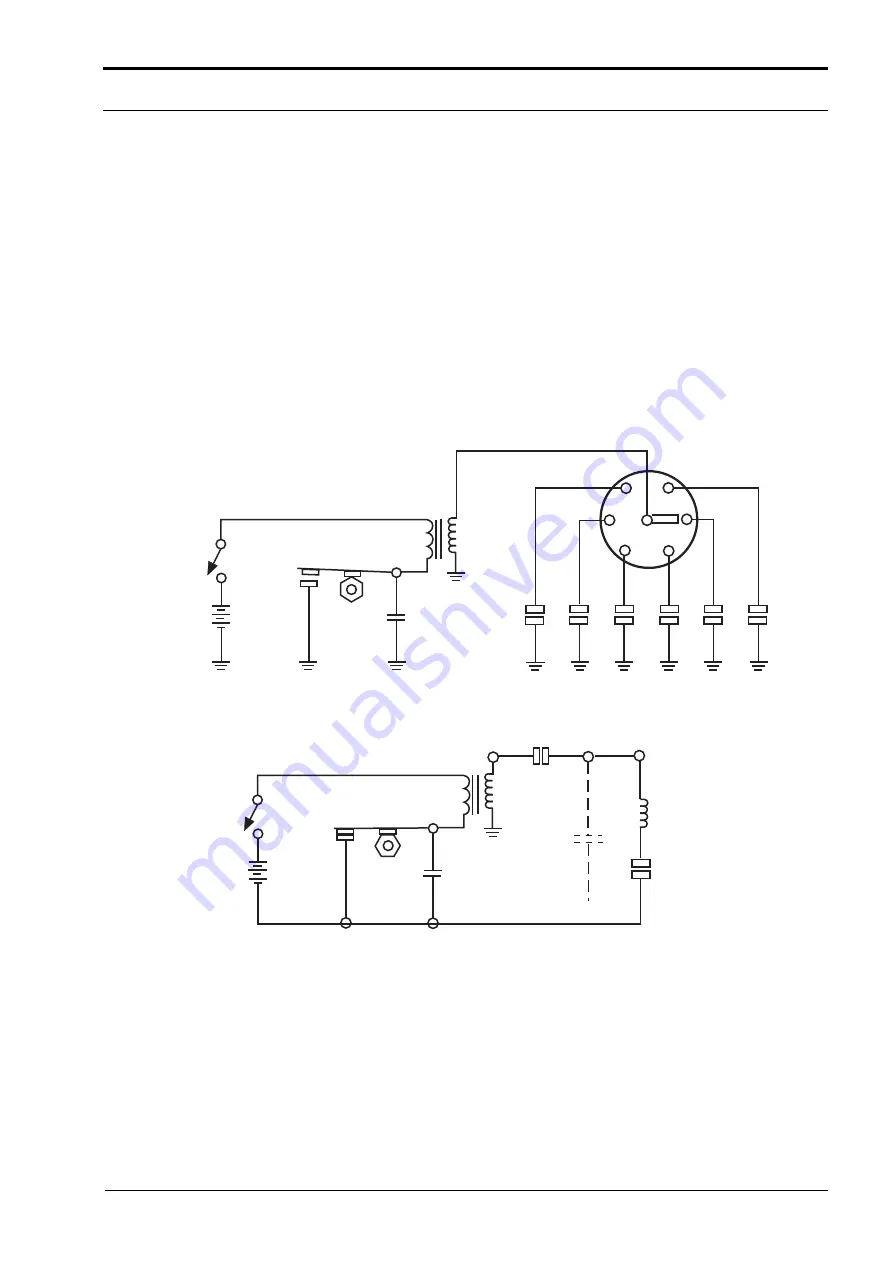
Operation of a Conventional Ignition System
Reducing Noise Interference in Mobile Two-Way Radio Installations
2-3
3.0
Operation of a Conventional Ignition System
To effectively reduce ignition interference in a vehicle, it is well to understand the operation of an
automobile ignition system.
Ignition is necessary in a gasoline engine to ignite the gasoline vapour and the air mixture in its
cylinders. The system is made up of the battery, distributor, breaker points, coil, condenser, and
spark plugs. The battery is the only electrical source of power in an automobile, so the lower battery
voltage must be stepped up to the high voltage necessary to arc across the spark plug electrodes.
This arc ignites the gas mixture.
In the conventional ignition system (Figures 2-2) a mechanical circuit breaker (the cam and points in
the distributor) opens the primary circuit of the ignition coil, and high voltage is developed at the
secondary. This high voltage is synchronized and applied to each spark plug by the distributor.
Figure 2-2 Typical Vehicular Ignition System, Simplified Schematic Diagram.
The battery is connected to the primary winding of the coil through the ignition switch. The primary
circuit is returned to the battery through the breaker points, which are bypassed by the condenser.
The points are normally closed. As the cam shaft is rotated by the engine, its lobes or corners open
and close the points in proper synchronisation with the piston in each cylinder.
Spark Plug Gap
Lead Inductance
Stray
Capacitance
Rotor Gap
Spark
plugs
Spark plug
leads
Distributor
HV Lead
Ignition
Coil
Condenser
Cam
Breaker
Points
Ignition
Switch
Battery
Ignition
Coil
Condenser
Cam
Breaker
Points
Ignition
Switch
Battery










































